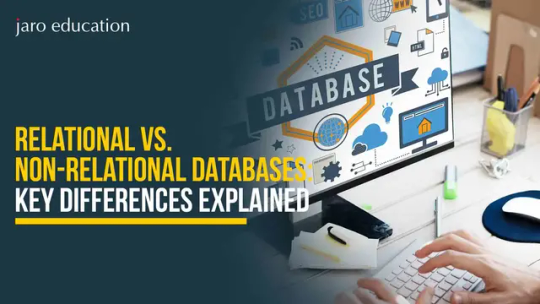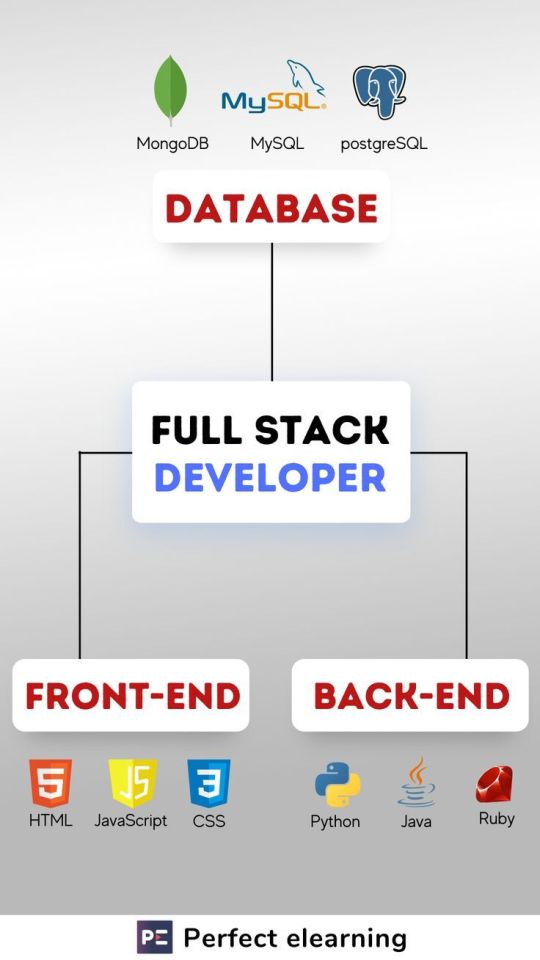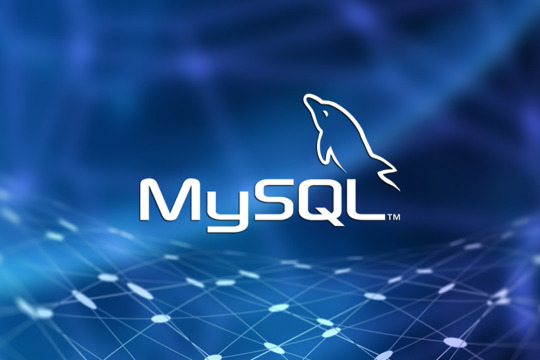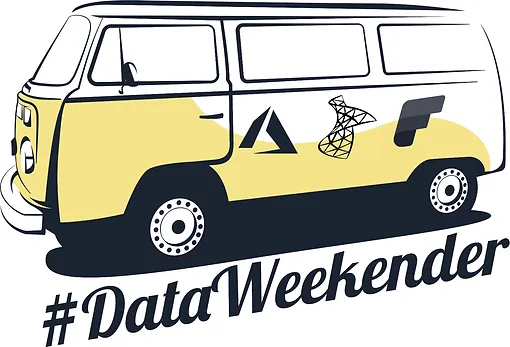#DatabaseDesign
Explore tagged Tumblr posts
Text
Relational vs. Non-Relational Databases: Key Differences Explained
Relational databases use structured tables with predefined schemas and support SQL for querying, making them ideal for structured data and complex relationships. Non-relational databases, like NoSQL, offer flexibility with unstructured or semi-structured data, excelling in scalability and performance for big data and real-time applications. Each suits different use cases based on data type and Read More..

0 notes
Text
Backend & Admin Panel Development by CodingBit
Coding Bit develops backend systems using technologies like PHP, MySQL, and JavaScript. These systems handle application logic, user authentication, and dynamic content management, ensuring a scalable and secure foundation for mobile apps. Coding Bit Admin Panel Integration: They design and implement admin panels that allow businesses to manage users, products, orders, and other critical app data efficiently. These panels are built with user-friendly interfaces to facilitate easy management without requiring technical expertise. Live Project Experience: Coding Bit emphasizes hands-on experience by involving clients in live projects. This approach helps bridge the gap between theoretical knowledge and practical application, ensuring that the backend systems and admin panels meet real-world business needs. Coding Bit.
📞 Phone Number: +91 9511803947
📧 Email Address: [email protected]

0 notes
Text
MySQL is an open-source relational database management system (RDBMS) that is widely used for storing, managing, and retrieving data efficiently. It is one of the most popular database systems, known for its speed, reliability, and ease of use. MySQL is commonly used in web development, powering applications such as WordPress, Facebook, and many others.
#MySQL#Database#SQL#DatabaseManagement#TechEducation#MySQLTutorial#SQLDatabase#TechBooks#DataManagement#MySQLForBeginners#TechLearning#RelationalDatabase#DatabaseDesign#MySQLQueries#CRUDOperations#DatabaseOptimization#MySQLDatabase#WebDevelopment#TechTutorial#BackendDevelopment#MySQLAdmin#DatabaseSecurity#DataModeling#MySQLTips#WebAppDevelopment#MySQLBestPractices
0 notes
Text
Star Schema vs Snowflake Schema: Choosing the Right Data Structure for Your Business
In the fast-paced world of data management, selecting the right schema is crucial for efficient data storage and retrieval. In this video, we explore the Star and Snowflake schemas, comparing their structures, advantages, and challenges. Whether you're managing a simple data environment or a complex system, this guide will help you choose the best schema to optimize your analytical capacity. Learn how each schema can impact performance, storage efficiency, and data integrity for your organization.
youtube
#DataManagement#StarSchema#SnowflakeSchema#DataWarehousing#DataModeling#DataStorage#BigData#Analytics#BusinessIntelligence#SQL#DatabaseDesign#TechTrends#DataScience#DataArchitecture#DataRetrieval#StorageOptimization#DatabasePerformance#BusinessAnalytics#DataRedundancy#DataIntegrity#Youtube
0 notes
Text
🌐 What is a Database? A Beginner's Guide 📚
📚💾 What is a Database?
Think of it as a high-tech treasure chest 🪙, storing all your important data in one neat place! From managing your Netflix watchlist 🎬 to saving your online shopping carts 🛍️, databases are the silent heroes 🦸♀️ behind your favorite apps. They keep things organized, searchable 🔍, and ready whenever you need them! 🚀✨

🔍 Types of Databases 🌐
1️⃣ 🗃️ Relational Database: Think of it as a spreadsheet 📊 that organizes data into neat tables. Example: MySQL, PostgreSQL.
2️⃣ 📚 NoSQL Database: For all the messy data 🌀—it handles unstructured info like a pro! Example: MongoDB, Cassandra.
3️⃣ ☁️ Cloud Database: Data stored up in the cloud ☁️, ready to be accessed anytime, anywhere! Example: AWS, Google Cloud.
4️⃣ 🧠 In-Memory Database: Super-fast, like the brain 🧠! Stores data in RAM for lightning-speed access. Example: Redis, Memcached.
5️⃣ 🏙️ Graph Database: Connects the dots 🧩 between data, like a social network! Example: Neo4j, Amazon Neptune.
Why Are Databases Important?
💡 Efficient Data Storage: Organize and store massive amounts of data easily.
🔍 Quick Access: Retrieve information in seconds, making tasks faster.
📈 Data Analysis: Helps businesses make smart decisions with organized data.
🛡️ Data Security: Protects sensitive information with backups and encryption.
🔄 Automation: Automates processes like transactions, inventory updates, and more!
🌍 Scalability: Can grow with your business or website as data increases.
3️⃣ Cool Database Facts
🧠 First Database Ever: IBM’s IMS (Information Management System) was created in the 1960s!
🌍 SQL Dominance: SQL is the most widely used database language around the globe.
🚀 Big Data Power: Databases handle massive amounts of data—Google processes over 40,000 searches per second!
#Database#TechTips#SQL#NoSQL#LearnTech#ProgrammingBasics#DataManagement#DBMS#BigData#DatabaseDesign#DataScience#DataAnalytics#CloudDatabase#DataMining#DatabaseAdministrator#RelationalDatabase#DatabaseOptimization#DataVisualization#DataStorage#DataSecurity#DatabaseDeveloper#DataWarehouse#MachineLearning#BusinessIntelligence
0 notes
Text
MySQL Naming Conventions

What is MySQL?
MySQL is a freely available open source Relational Database Management System (RDBMS) that uses Structured Query Language (SQL). SQL is the most popular language for adding, accessing and managing content in a database. It is most noted for its quick processing, proven reliability, ease and flexibility of use.
What is a naming convention?
In computer programming, a naming convention is a set of rules for choosing the character sequence to be used for identifiers that denote variables, types, functions, and other entities in source code and documentation.
General rules — Naming conventions
Using lowercase will help speed typing, avoid mistakes as MYSQL is case sensitive.
Space replaced with Underscore — Using space between words is not advised.
Numbers are not for names — While naming, it is essential that it contains only Alpha English alphabets.
Valid Names — Names should be descriptive of the elements. i.e. — Self-explanatory and not more than 64 characters.
No prefixes allowed.
Database name convention
Name can be singular or plural but as the database represents a single database it should be singular.
Avoid prefix if possible.
MySQL table name
Lowercase table name
MySQL is usually hosted in a Linux server which is case-sensitive hence to stay on the safe side use lowercase. Many PHP or similar programming frameworks, auto-detect or auto-generate class-based table names and most of them expect lowercase names.
Table name in singular
The table is made up of fields and rows filled with various forms of data, similarly the table name could be plural but the table itself is a single entity hence it is odd and confusing. Hence use names like User, Comment.
Prefixed table name
The table usually has the database or project name. sometimes some tables may exist under the same name in the database to avoid replacing this, you can use prefixes. Essentially, names should be meaningful and self-explanatory. If you can’t avoid prefix you can fix it using php class.
Field names
Use all above cases which include lowercase, no space, no numbers, and avoid prefix.
Choose short names no-longer than two words.
Field names should be easy and understandable
Primary key can be id or table name_id or it can be a self-explanatory name.
Avoid using reserve words as field name. i.e. — Pre-defined words or Keywords. You can add prefix to these names to make it understandable like user_name, signup_date.
Avoid using column with same name as table name. This can cause confusion while writing query.
Avoid abbreviated, concatenated, or acronym-based names.
Do define a foreign key on database schema.
Foreign key column must have a table name with their primary key.
e.g. blog_id represents foreign key id from table blog.
Avoid semantically — meaningful primary key names. A classic design mistake is creating a table with primary key that has actual meaning like ‘name’ as primary key. In this case if someone changes their name then the relationship with the other tables will be affected and the name can be repetitive losing its uniqueness.
Conclusion
Make your table and database names simple yet understandable by both database designers and programmers. It should things that might cause confusion, issues with linking tables to one another. And finally, it should be readable for programming language or the framework that is implemented.
#MySQL#DatabaseManagement#SQL#NamingConventions#RelationalDatabase#DatabaseDesign#CodingStandards#TableNaming#FieldNaming#DatabaseSchema#ProgrammingTips#DataManagement#CaseSensitivity#PrimaryKey#ForeignKey#DatabaseBestPractices#OpenSource#DatabaseOptimization#MySQLTips#DataStructure
0 notes
Text
Mô hình dữ liệu là gì? Các yếu tố chính của mô hình dữ liệu
Một mô hình dữ liệu tốt giúp ta hiểu rõ hơn về quan hệ giữa các đối tượng, thuộc tính và hành vi của dữ liệu trong hệ thống.
Trong bài viết này, chúng ta sẽ khám phá các loại mô hình dữ liệu là gì và vai trò của chúng trong việc tổ chức và quản lý dữ liệu.
0 notes
Text
I'm Speaking at DataWeekender 6.5!
Unfortunately, the Data TLV summit was delayed. But I still have some good news: I'll be speaking at #DataWeekender 6.5 on November 11, and I will be delivering a brand new session! ✨ It's next week! Register now! #Microsoft #SQLServer #MadeiraData
Unfortunately, the Data TLV summit was delayed. But I still have some good news: I’ll be speaking at #DataWeekender 6.5 on November 11, and I will be delivering a brand new session! ✨ Continue reading Untitled

View On WordPress
0 notes
Text
Unlocking Insights: Navigating the Data Maze with Data Consulting Services

In the digital age, data is often considered the most valuable asset of any organization. It's the lifeblood that fuels informed decision-making, drives innovation, and enhances efficiency. However, the abundance of data can be overwhelming, akin to navigating a complex maze. This is where data consulting services step in, offering organizations the expertise to unlock the insights hidden within their data, streamline operations, and chart a course for success. In this article, we will explore the world of data consulting services, with a focus on database solutions, custom database development services, and the role of cloud database solutions in simplifying the data journey.
The Data Challenge
Organizations of all sizes are grappling with the ever-increasing volume, velocity, and variety of data. From customer information and transaction records to supply chain data and operational metrics, the sheer volume of data can be daunting. This is further complicated by the diversity of data sources, including structured data from databases, semi-structured data from documents, and unstructured data from social media and sensor networks.
Navigating this data maze requires more than just storage solutions; it demands a strategic approach to data management and analysis. This is precisely where data consulting services come into play.
Data Consulting Services: The Guiding Light
Data consulting services encompass a broad spectrum of offerings designed to help organizations harness the full potential of their data. These services go beyond simply storing data; they involve the strategic management, analysis, and interpretation of data to extract valuable insights.
Database Solutions: Database consulting services form the foundation of effective data management. They involve the design, development, and optimization of database systems to ensure data accuracy, integrity, and availability. Database solutions are pivotal in ensuring that organizations can store, retrieve, and analyze their data efficiently.
Custom Database Development Services: Sometimes, off-the-shelf database solutions may not fully meet an organization's unique needs. Custom database development services come into play here. These services design and develop databases tailored to an organization's specific requirements, optimizing performance and scalability.
The Role of Custom Database Development Services
Custom database development services provide a holistic approach to database solutions. They recognize that every organization is unique, and therefore, its data requirements are equally unique. Here's how custom database development services contribute to navigating the data maze:
Tailored Solutions: Custom database development begins with a thorough understanding of the organization's data needs and objectives. This information is used to design a database structure that aligns perfectly with these requirements.
Optimized Performance: Off-the-shelf databases may not be optimized for an organization's specific use cases. Custom database development services ensure that the database performs efficiently, even as data volumes grow.
Scalability: As organizations grow, their data needs expand. Custom databases are designed with scalability in mind, allowing them to adapt seamlessly to changing requirements.
Data Security: Data security is a top priority. Custom databases can be fortified with robust security measures to protect sensitive information from unauthorized access or breaches.
Integrations: Custom databases can be seamlessly integrated with existing systems and applications, ensuring smooth data flow across the organization.
The Cloud and Data Consulting Services
The cloud has revolutionized data management, offering flexible, scalable, and cost-effective solutions. Cloud database solutions are gaining traction in the world of data consulting services due to their versatility and accessibility. Here's how cloud database solutions simplify the data journey:
Scalability: Cloud databases can be easily scaled up or down to accommodate changing data requirements. This flexibility is particularly beneficial for businesses with fluctuating workloads.
Cost Efficiency: Cloud databases eliminate the need for large upfront investments in hardware and infrastructure. Organizations pay only for the resources they use, making it a cost-efficient option.
Accessibility: Cloud databases can be accessed from anywhere with an internet connection, facilitating remote work and collaboration.
Data Redundancy: Cloud providers typically offer robust data redundancy and backup solutions, ensuring data integrity and availability.
Automated Updates: Cloud database providers handle routine maintenance and updates, allowing organizations to focus on data analysis and decision-making.
Conclusion : Harnessing Data for Success
In today's data-driven world, the ability to effectively harness data can be a game-changer for businesses. Data consulting services, including database solutions, custom database development services, and cloud database solutions, empower organizations to unlock insights, make informed decisions, and drive innovation.
However, it's essential to recognize that the data journey is not a one-time endeavor. It's an ongoing process that requires continuous evaluation, optimization, and adaptation to remain relevant and competitive. With the guidance of data consulting services, organizations can navigate the data maze with confidence, unlocking the full potential of their most valuable asset – data.
0 notes
Text
Master Bazar, the best software development company in Arizona offers various services to cater to various industries and business needs. With a team of experienced developers, Master Bazar specializes in creating customized software solutions that are tailored to meet the specific requirements of their clients. Our company has the expertise and knowledge to deliver high-quality solutions that drive innovation and enhance business growth.
#SoftwareDevelopment#CustomSoftware#WebDevelopment#MobileAppDevelopment#AgileDevelopment#SoftwareEngineering#FullStackDevelopment#FrontEndDevelopment#BackEndDevelopment#UIUXDesign#DatabaseDesign#ProjectManagement#SoftwareTesting#ITConsulting
0 notes
Text
🎉 Just finished reading this awesome adventure in database design! If you're into tech and love a good challenge, check out this post on database normalization. It's a fun and insightful read that turns a complex topic into a captivating story. 🚀📊
The Great Data Cleanup: A Database Design Adventure
As a budding database engineer, I found myself in a situation that was both daunting and hilarious. Our company's application was running slower than a turtle in peanut butter, and no one could figure out why. That is, until I decided to take a closer look at the database design.
It all began when my boss, a stern woman with a penchant for dramatic entrances, stormed into my cubicle. "Listen up, rookie," she barked (despite the fact that I was quite experienced by this point). "The marketing team is in an uproar over the app's performance. Think you can sort this mess out?"
Challenge accepted! I cracked my knuckles, took a deep breath, and dove headfirst into the database, ready to untangle the digital spaghetti.
The schema was a sight to behold—if you were a fan of chaos, that is. Tables were crammed with redundant data, and the relationships between them made as much sense as a platypus in a tuxedo.
"Okay," I told myself, "time to unleash the power of database normalization."
First, I identified the main entities—clients, transactions, products, and so forth. Then, I dissected each entity into its basic components, ruthlessly eliminating any unnecessary duplication.
For example, the original "clients" table was a hot mess. It had fields for the client's name, address, phone number, and email, but it also inexplicably included fields for the account manager's name and contact information. Data redundancy alert!
So, I created a new "account_managers" table to store all that information, and linked the clients back to their account managers using a foreign key. Boom! Normalized.
Next, I tackled the transactions table. It was a jumble of product details, shipping info, and payment data. I split it into three distinct tables—one for the transaction header, one for the line items, and one for the shipping and payment details.
"This is starting to look promising," I thought, giving myself an imaginary high-five.
After several more rounds of table splitting and relationship building, the database was looking sleek, streamlined, and ready for action. I couldn't wait to see the results.
Sure enough, the next day, when the marketing team tested the app, it was like night and day. The pages loaded in a flash, and the users were practically singing my praises (okay, maybe not singing, but definitely less cranky).
My boss, who was not one for effusive praise, gave me a rare smile and said, "Good job, rookie. I knew you had it in you."
From that day forward, I became the go-to person for all things database-related. And you know what? I actually enjoyed the challenge. It's like solving a complex puzzle, but with a lot more coffee and SQL.
So, if you ever find yourself dealing with a sluggish app and a tangled database, don't panic. Grab a strong cup of coffee, roll up your sleeves, and dive into the normalization process. Trust me, your users (and your boss) will be eternally grateful.
Step-by-Step Guide to Database Normalization
Here's the step-by-step process I used to normalize the database and resolve the performance issues. I used an online database design tool to visualize this design. Here's what I did:
Original Clients Table:
ClientID int
ClientName varchar
ClientAddress varchar
ClientPhone varchar
ClientEmail varchar
AccountManagerName varchar
AccountManagerPhone varchar
Step 1: Separate the Account Managers information into a new table:
AccountManagers Table:
AccountManagerID int
AccountManagerName varchar
AccountManagerPhone varchar
Updated Clients Table:
ClientID int
ClientName varchar
ClientAddress varchar
ClientPhone varchar
ClientEmail varchar
AccountManagerID int
Step 2: Separate the Transactions information into a new table:
Transactions Table:
TransactionID int
ClientID int
TransactionDate date
ShippingAddress varchar
ShippingPhone varchar
PaymentMethod varchar
PaymentDetails varchar
Step 3: Separate the Transaction Line Items into a new table:
TransactionLineItems Table:
LineItemID int
TransactionID int
ProductID int
Quantity int
UnitPrice decimal
Step 4: Create a separate table for Products:
Products Table:
ProductID int
ProductName varchar
ProductDescription varchar
UnitPrice decimal
After these normalization steps, the database structure was much cleaner and more efficient. Here's how the relationships between the tables would look:
Clients --< Transactions >-- TransactionLineItems
Clients --< AccountManagers
Transactions --< Products
By separating the data into these normalized tables, we eliminated data redundancy, improved data integrity, and made the database more scalable. The application's performance should now be significantly faster, as the database can efficiently retrieve and process the data it needs.
Conclusion
After a whirlwind week of wrestling with spreadsheets and SQL queries, the database normalization project was complete. I leaned back, took a deep breath, and admired my work.
The previously chaotic mess of data had been transformed into a sleek, efficient database structure. Redundant information was a thing of the past, and the performance was snappy.
I couldn't wait to show my boss the results. As I walked into her office, she looked up with a hopeful glint in her eye.
"Well, rookie," she began, "any progress on that database issue?"
I grinned. "Absolutely. Let me show you."
I pulled up the new database schema on her screen, walking her through each step of the normalization process. Her eyes widened with every explanation.
"Incredible! I never realized database design could be so... detailed," she exclaimed.
When I finished, she leaned back, a satisfied smile spreading across her face.
"Fantastic job, rookie. I knew you were the right person for this." She paused, then added, "I think this calls for a celebratory lunch. My treat. What do you say?"
I didn't need to be asked twice. As we headed out, a wave of pride and accomplishment washed over me. It had been hard work, but the payoff was worth it. Not only had I solved a critical issue for the business, but I'd also cemented my reputation as the go-to database guru.
From that day on, whenever performance issues or data management challenges cropped up, my boss would come knocking. And you know what? I didn't mind one bit. It was the perfect opportunity to flex my normalization muscles and keep that database running smoothly.
So, if you ever find yourself in a similar situation—a sluggish app, a tangled database, and a boss breathing down your neck—remember: normalization is your ally. Embrace the challenge, dive into the data, and watch your application transform into a lean, mean, performance-boosting machine.
And don't forget to ask your boss out for lunch. You've earned it!
8 notes
·
View notes
Text

🚀 Having trouble with your TECH1400 Database Design and Management assignment? Get expert assistance with ER diagrams, SQL queries, normalization, and more.! 📊💻
We specialize more in related courses:
TECH2400 Introduction to Cyber Security
TECH3200 Artificial Intelligence and Machine Learning in IT
TECH1300 Information Systems in Business
TECH2200 IT Project Management
TECH1100 Professional Practice and Communication in IT
TECH2100 Introduction to Information Networks
TECH3100 Data Visualisation in R
TECH2300 Service and Operations Management in IT
TECH8000 IT Capstone
TECH1200 Fundamentals of Programming
DM now for fast & reliable assistance! 📩
#DatabaseDesign #SQL #StudentHelp #AssignmentHelp #Australia #TECH5300 #TECH4200 #TECH3100 #TECH1300 #TECH6100 #TECH2400 #Kaplan #TECH2200 #TECH2100 #TECH5100 #TECH4100 #sydney #TECH7000 #TECH1200 #TECH2100 #TECH1100 #TECH2300 #TECH8000 #TECH3300 #TECH4300 #adelaide #TECH1400 #TECH5200
0 notes
Text
Blog #11 – Oral Recitation: ERD, Normalization, and the Data Dictionary
For this week’s blog, we had an oral recitation covering three important database design topics: Entity Relationship Diagram (ERD), Database Normalization, and the Data Dictionary. What made this recitation unique was the use of a module roulette, where questions were randomly selected from Modules 7, 8, and 9. The exciting twist? We were allowed to use our notes, and those who raised their hands first had the chance to answer!
Here’s a quick recap of what we covered:
📌 Module 7 – Entity Relationship Diagram (ERD): An ERD is a visual representation of the system’s data structure. It maps out key entities—like users, records, or transactions—and the relationships between them. Using symbols like rectangles (for entities) and diamonds (for relationships), the ERD helps developers and stakeholders understand how the database is structured and how different components interact.
📌 Module 8 – Database Normalization: This process ensures that data is well-organized and free from redundancy. Normalization involves dividing tables into smaller, related ones and defining relationships between them. It’s essential for eliminating anomalies (like insert, update, or delete issues) and maintaining data integrity across the system.
📌 Module 9 – Data Dictionary: The Data Dictionary is a text-based reference that describes all the data elements in a system—like field names, data types, relationships, and constraints. It acts as a central guide for developers, helping maintain consistency and clarity when designing or updating databases.
I’m happy to share that I passed the oral recitation and met the score requirements! 😊 It feels great to see hard work and preparation pay off, especially when discussing topics that will play a big role in our ongoing research project.
Excited to keep building on this knowledge as we continue with our manuscript and system design!
#AcademicJourney #OralRecitation #ERD #Normalization #DataDictionary #DatabaseDesign #LearningMilestones


0 notes
Text
Data Security in Database Design: Protecting Your Information from Threats and Attacks
Data security is a critical concern for any organization that handles sensitive information. Database design plays a crucial role in protecting data from various threats and attacks. Here are some best practices to ensure data security in database design:

Access control: Limit access to the database to authorized users only. Use strong authentication mechanisms, such as passwords or biometrics, to ensure that only legitimate users can access the data.
Encryption: Use encryption techniques to protect data at rest and in transit. Encryption can prevent unauthorized access to sensitive information, even if attackers gain access to the database.
Data masking: Implement data masking techniques to hide sensitive information from users who do not need to see it. This can include techniques such as replacing sensitive data with random characters or masking certain characters.
Regular backups: Make regular backups of the database and store them in a secure location. This ensures that data can be recovered in case of a disaster or data breach.
Vulnerability testing: Regularly test the database for vulnerabilities and address any issues promptly. This can include scanning for vulnerabilities in the database software, as well as testing the security of the underlying infrastructure.
Security patches: Keep the database software up-to-date with the latest security patches and updates. This can help prevent known vulnerabilities from being exploited by attackers.
Monitoring and logging: Implement monitoring and logging mechanisms to track who is accessing the database and what they are doing. This can help identify potential threats and suspicious behavior.
Regular training: Train database users on best practices for data security, including how to create strong passwords, how to identify phishing emails, and how to report suspicious activity.
By following these best practices, organizations can improve data security in their database design and protect their sensitive information from various threats and attacks.
0 notes
Photo

Need assistance for your database design and development assignment? Connect with us on:
Visit: www.amigoassignment.com
Email: [email protected]
WhatsApp: +918118036731
0 notes
Text
ACID and BASE in Modern Data Engineering
https://lnkd.in/edvnY8DR #databasedevelopment #databaseadministration #databasemanagement #database #databasequeries #databasedesign
0 notes